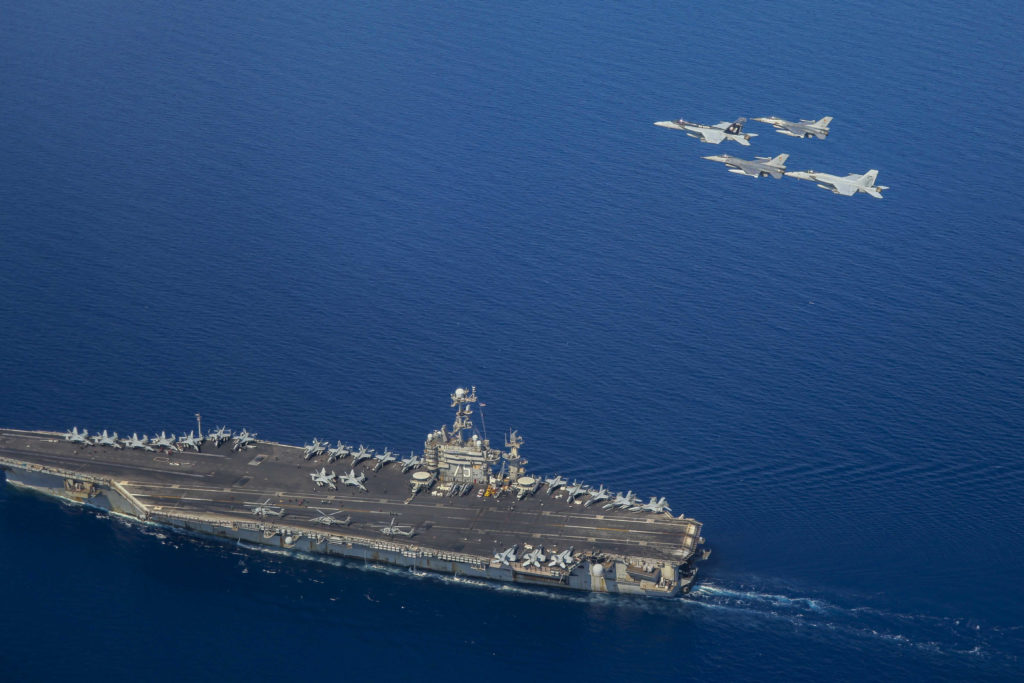Hurricane Ida struck the coast of Louisiana Sunday as a powerful Category 4 storm, 16 years to the day after deadly Hurricane Katrina devastated the southern US city of New Orleans.
“Extremely dangerous Category 4 Hurricane Ida makes landfall near Port Fourchon, Louisiana,” the National Hurricane Center wrote in an advisory.
Ida struck the port, located approximately 100 miles (160 kilometers) directly south of New Orleans, at 1655 GMT, packing maximum sustained winds estimated at 150 miles per hour.
Ahead of Ida’s arrival, showers and strong wind swept New Orleans’ deserted streets throughout the morning, buffeting boarded-up windows at businesses and homes surrounded by sandbags.
State Governor John Bel Edwards said Ida, which had gathered force on its approach through the warm waters of the Gulf, could be the most powerful storm to hit the state since 1850.
“Hurricane #Ida has made landfall in Louisiana. Find the safest place in your house and stay there until the storm passes,” he wrote on Twitter.
Storm surges had earlier flooded the town of Grand Isle, on a barrier island south of New Orleans, CNN reported.
The National Hurricane Center also reported high water levels and flooding affecting the communities of Shell Beach, Louisiana and Yach Club, Mississippi.
Extensive and long-lasting power outages are expected, with more than 150,000 homes already without electricity by midday, according to the website poweroutage.us.
Amid urgent warnings of catastrophic damage, most residents had heeded authorities’ instructions to flee. Scores of people packed bumper-to-bumper roads leading out of New Orleans in the days preceding Ida’s arrival.
In one neighborhood in eastern New Orleans, a few residents were still completing last-minute preparations just hours before landfall.
“I’m not sure if I’m prepared,” said Charles Fields, who was still bringing his garden furniture indoors, “but we just have to ride it.”
The 60-year-old, who in 2005 saw Hurricane Katrina flood his house with 11 feet (3.3 meters) of water, added that “we’ll see how it holds up.”
– ‘Very serious test’ –
Governor Edwards warned on Sunday that Ida would be “a very serious test for our levee systems,” an extensive network of pumps, gates and earthen and concrete berms that was expanded after Katrina.
He told CNN that hundreds of thousands of residents were believed to have evacuated.
The storm “presents some very challenging difficulties for us, with the hospitals being so full of Covid patients,” he said.
The Southern state, with a low rate of vaccinations, has been among the hardest hit by the pandemic, severely stressing hospitals. Hospitalizations, at 2,700 on Saturday, are near their pandemic high.
The memory of Katrina, which made landfall on August 29, 2005, is still fresh in Louisiana, where it caused some 1,800 deaths and billions of dollars in damage.
“It’s very painful to think about another powerful storm like Hurricane Ida making landfall on that anniversary,” Edwards had previously said.
Rainfall of 10 to 18 inches (25 to 46 centimeters) is expected in parts of southern Louisiana through Monday, with up to 24 inches in some areas.
– Ida and the coronavirus –
The White House said Sunday that federal agencies had deployed more than 2,000 emergency workers to the region — including 13 urban search-and-rescue teams — along with food and water supplies and electric generators.
Local authorities, the Red Cross and other organizations have prepared dozens of shelters with room for at least 16,000 people, the White House added.
Plans to cope with the hurricane — and plans for the shelters — have been complicated by Covid-19.
US President Joe Biden, who has declared a state of emergency for Louisiana, on Saturday urged anyone in community shelters to wear masks and maintain distance.
Scientists have warned of a rise in cyclone activity as the ocean surface warms due to climate change, posing an increasing threat to the world’s coastal communities.











